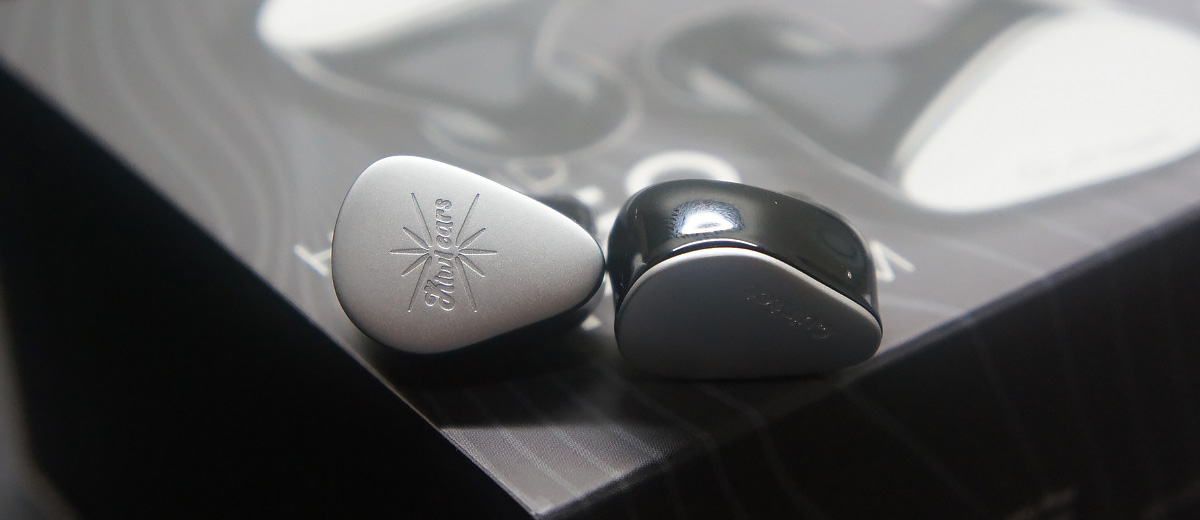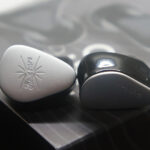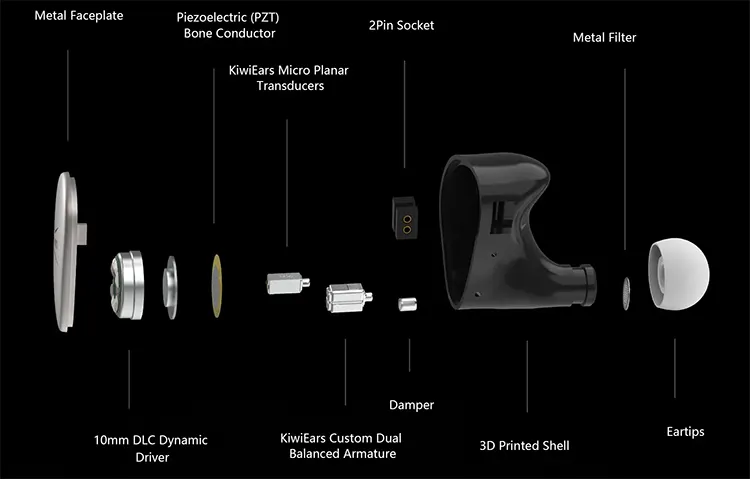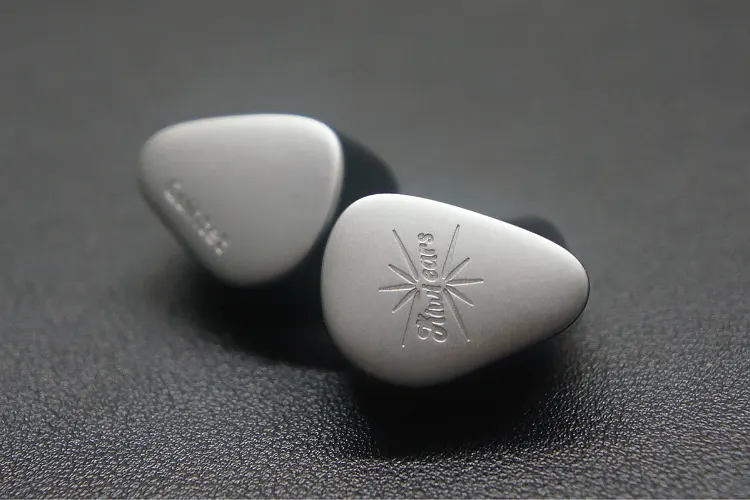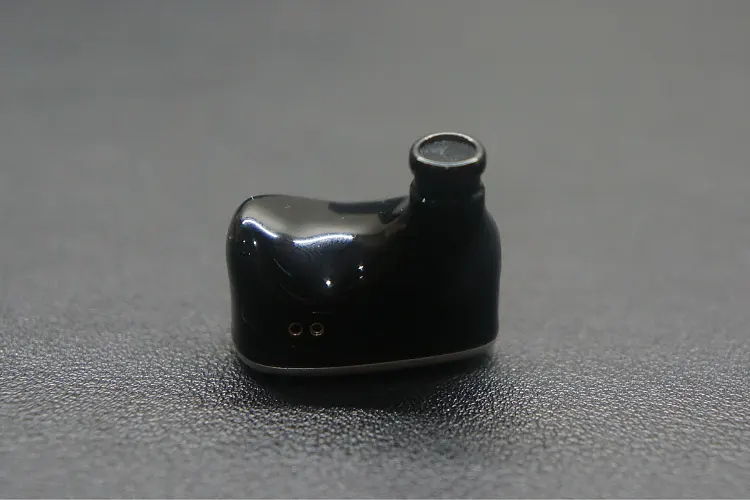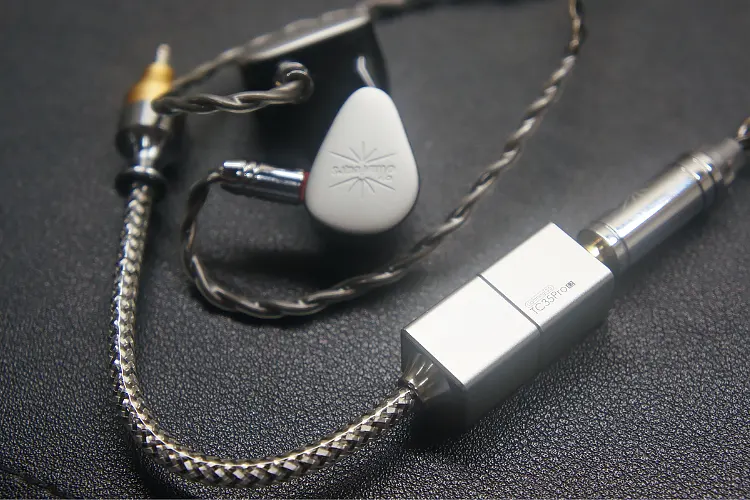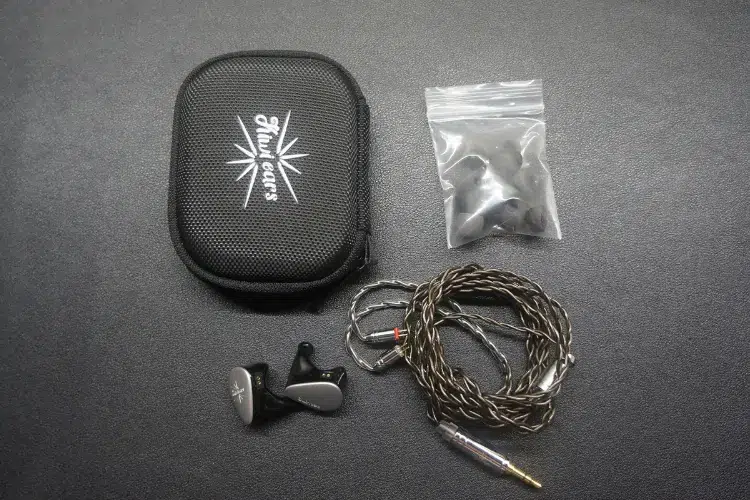This is a review of the Kiwi Ears Quintet, which is an affordable multi-driver IEM featuring dynamic, BA, planar, and piezoelectric driver technology. It is priced at $219.
Disclaimer: This is a sample sent in exchange for our honest opinion. Headfonics is an independent website with no affiliate links or services. We thank Linsoul and Kiwi Ears for their support.
To read more about Kiwi Ears gear previously covered on Headfonics please click here.
Note, this article follows our latest scoring guidelines which you can read in more detail here.
To most members of the ChiFi community, Kiwi Ears ars may appear to have just come out of thin air, but nothing could be farther from the truth.
Over the past few months, they have been steadily releasing solid pairs across various price points such as the $109 Quartet and the $499 Orchestra. However, Kiwi Ears is now releasing a pair of IEMs that lies somewhere in the middle, the $219 Quintet.
Its big ‘ace in the deck’ is a unique 5-driver configuration composed of 4 different driver types, let’s see if Kiwi Ears has released another price leader or an incoherent mess.
Tech Highlights
As its name suggests, the quintet makes use of a 5 driver configuration making use of 4 unique driver types: a 10mm diamond-like carbon (DLC) dynamic driver, two Knowles balanced armature (BA) drivers, a micro planar magnetic driver (MPT), and a piezoelectric (PZT) bone conductor driver.
Basing it purely on the spec sheet, it’s hard to deny the individual uniqueness of a PZT driver and a Micro Planar Transducer, however implementing both is surely a feat of engineering in itself.
According to Kiwi Ears, the MPT has been tuned to deliver crisp and detailed treble, whilst the PZT driver has allegedly been tuned to provide an increased level of resolution and sound stage.
Design
The Quintet’s design philosophy is par for the course in the sub-$250 ChiFi industry. Like other similarly priced IEMs, the Quintet makes use of a 3D-printed resin shell with a separated metal face plate.
The shell makes use of dark opaque resin, like the material used in the Quartet IEMs, hiding the complex drivers housed in the shell.
The faceplate has understated aesthetics, but its anodized finish has held up very well in my day-to-day use. It has remained resistant to fingerprints, whilst also not showing any micro scratches whatsoever.
The right IEM faceplate has a subdued “Quintet” logo towards the bottom of the shell, whilst the faceplate on the left shows the stylized Kiwi Ears logo.
Despite being distinctly separate, the metal faceplate and the resin shell are attached with tight tolerances. When running my fingernail through the shell, the difference between the two materials is obvious, however, there were no visible seams that my fingernails got caught on.
The Quintet makes use of standard and minimalistic design tropes within the price range, but it is executed with high quality and good durability.
Comfort and Isolation
The Quintet has an average level of comfort, thanks to its large yet ergonomic shape and average weight given the build.
The earphone fits snugly in the ear canal, with a slight overhang due to the shell’s larger size. Despite this, I did not experience any fatigue or discomfort even after long listening sessions.
The earphone also provides decent isolation from external noise, despite its making use of a double-vented shell design. The vented design allows some air to flow in and out of the earphone, which reduces the pressure build-up and enhances the soundstage.
The IEM’s comfort is quite average. They are less comfortable than my comfort benchmarks the Open Audio Witch Pro, but they are more comfortable than the slightly larger Moondrop Blessing 3.
They are quite close in comfort to the Tempotec IM05, however, the Quintet’s tips still give it the edge in terms of comfort.
Stock Cable
The stock cable of the Quintet is a 4-core oxygen-free silver-plated copper cable with a 3.5mm single-ended plug and a standard 0.78mm 2-pin connector. The cable is well-made and durable, with a smooth and shiny appearance. The cable has a semi-transparent sheath with a black tint, revealing the silver-plated copper wires inside.
The plug is gold-plated and has a polished cylindrical metal housing with the Kiwi Ears logo engraved on it. The cable has a chin strap with the same polished cylindrical metal finish but remains free from any branding.
The stock cable of the Quintet is also good in terms of sound quality, as it does not add any microphonics whatsoever. In my testing composed of desk and on-the-go listening, I did not experience any audible microphonics.
Packaging & Accessories
The Quintet box comes in an elaborately designed cardboard sleeve dominated by an image of the IEMs, as well as the stylized Logos. Removing the sleeve reveals a simple black cardboard box with a stylized Kiwi Ears logo at the front. Opening the box shows the IEMs and all included accessories.
Aside from the IEMs themselves and the stock cable, the package includes a compact cloth hardshell case, a total of 6 pairs of ear tips, and 2 pairs (Narrow bore, and Wide Bore) of each size (S, M, and L).
The inclusions are not class-leading and are honestly quite average. While not as impressive as the new accessory standard, the Tangzu FUDU verse1, the included case is purely utilitarian and holds up well to daily use.
Sound Impressions
Bass
The bass of the Quintet hits deep with good presence and weight. The bass drum hits aren’t exaggerated like in more V-shaped IEMs such as the Sono with the red nozzle. However, its bass emphasis gives it a very satisfying, thick, and warm tonality.
I never found the bass quantity lacking. The amount of rumble and impact should be enough for most non-bass heads. Bass hits are textured and well-articulated. Different bass hits do not come off as a bloated mess and are played back with good control.
The warmth introduced into the overall tonality gives bass guitars and deep horn instruments a larger-than-life sense of authority that gives jazz tracks a “wow” factor. This warm tonality on the lower end bleeds into the lower mids at times but is still well-controlled for the most part.
Mids
The Quintet mids are decently articulated with decent resolution. The lower mids have a very bodied presentation in no small part to the warmer tonality on the low end. This gives male vocals good rumble and authority, whilst being able to playback vocal techniques with good texture and resolution.
Piano keys and acoustic guitars are less forward than the rest of the mids, however, they still maintain a good sense of resolution. They are never drowned out; they are merely less audible when compared to the rest of the sounds in the frequency response.
The upper mids are presented with good air and resolution. Percussive wind instruments were played back with good articulation, and female vocals were presented with very good energy and contributed to a very exciting sound signature.
Treble
The treble region of the Quintet is very airy and energetic. Cymbals and percussive wind instruments are presented with good energy; however, I did observe sibilance in some cases though it did not reach the point of being a deal breaker.
Individual cymbal strikes were played back with good detail, making different cymbal strikes and types easily distinguishable from each other. This overall energy added by this treble tonality contributes to an engaging and impressive listening experience.
Imaging
The imaging of the Quintet is quite average, it is able to isolate and position instruments at an acceptable level, but its imaging performance does not stand out.
Its staging performance is average as well, it isn’t wide enough to envelop you in a wall of sound, but it isn’t so intimate that it ruins the atmosphere either.
Click on page 2 below for our recommended pairings and selected comparisons.

